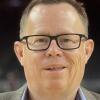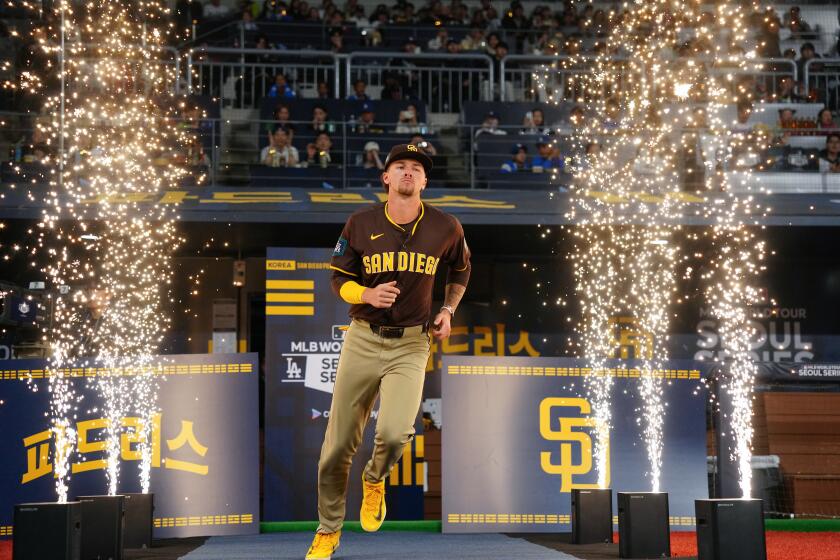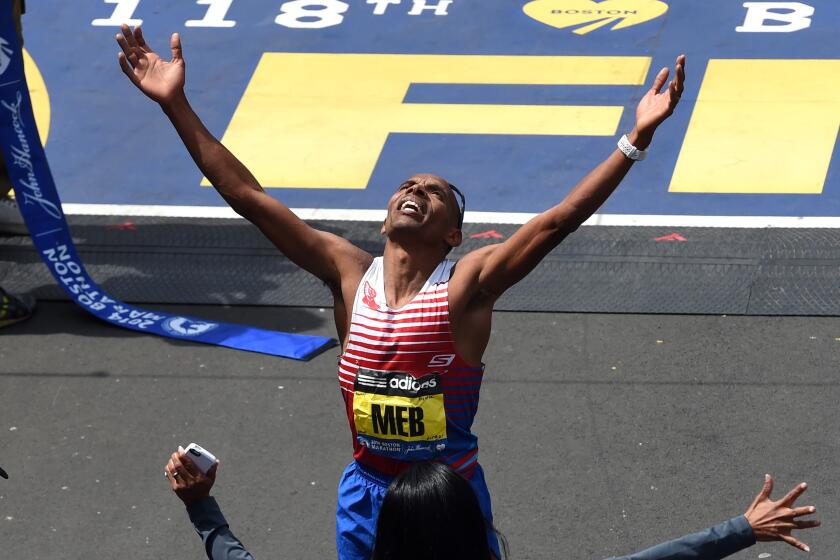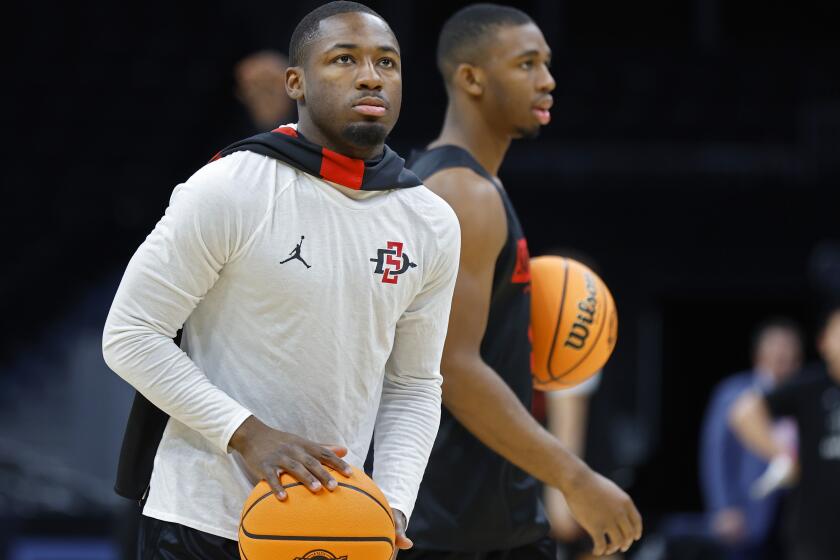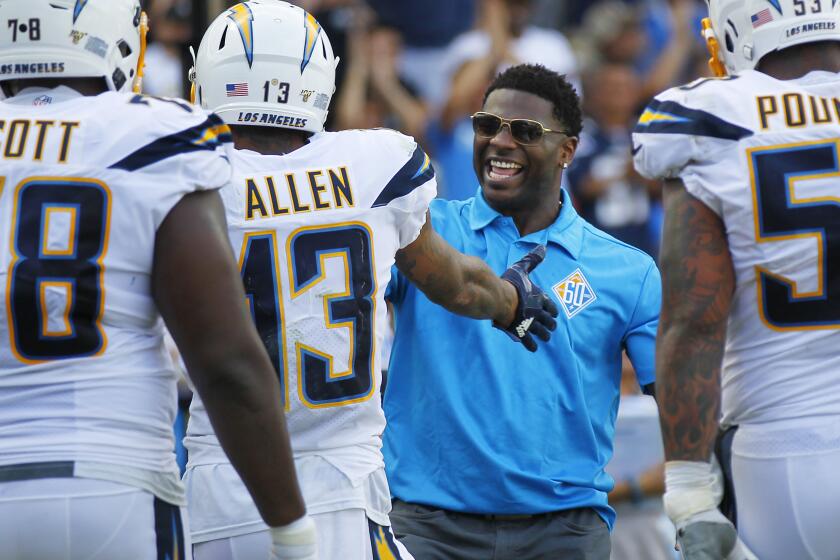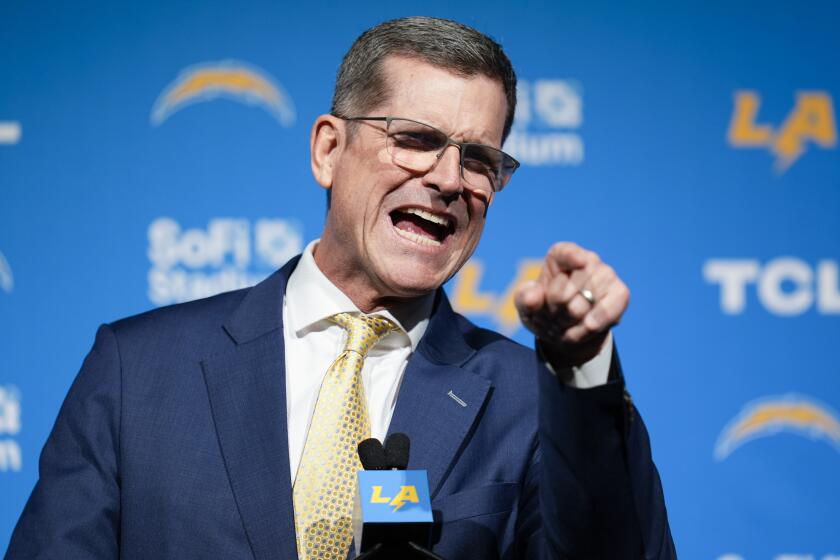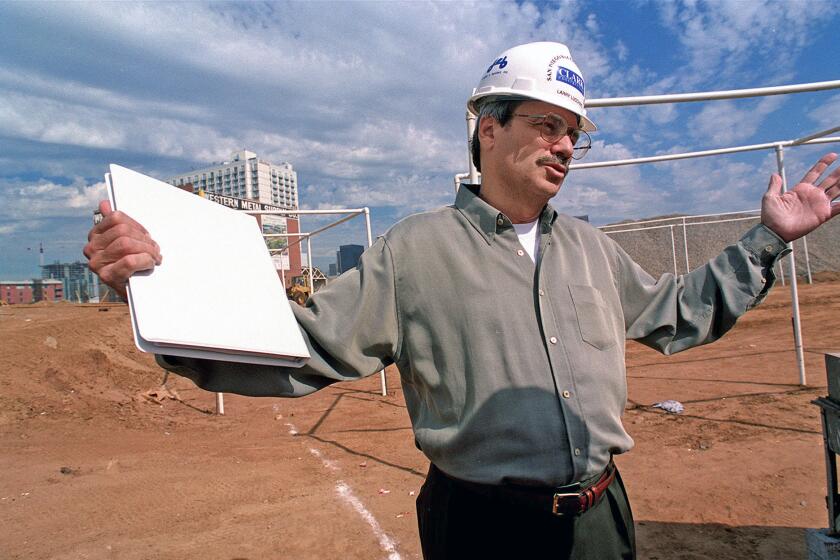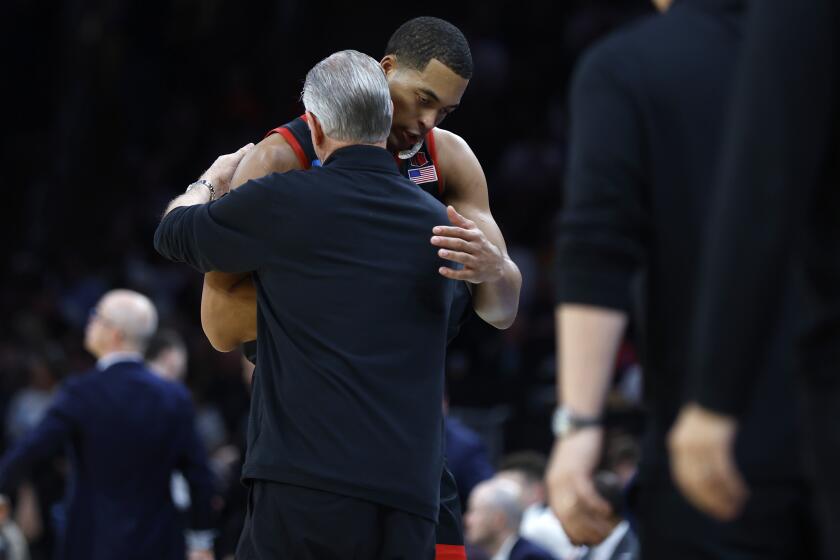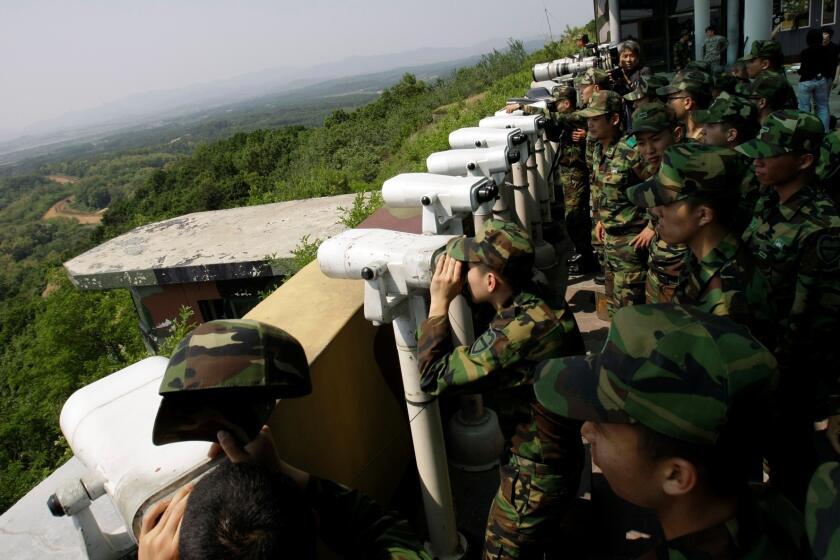Column: How and why Steve Lavin wound up coaching basketball in San Diego
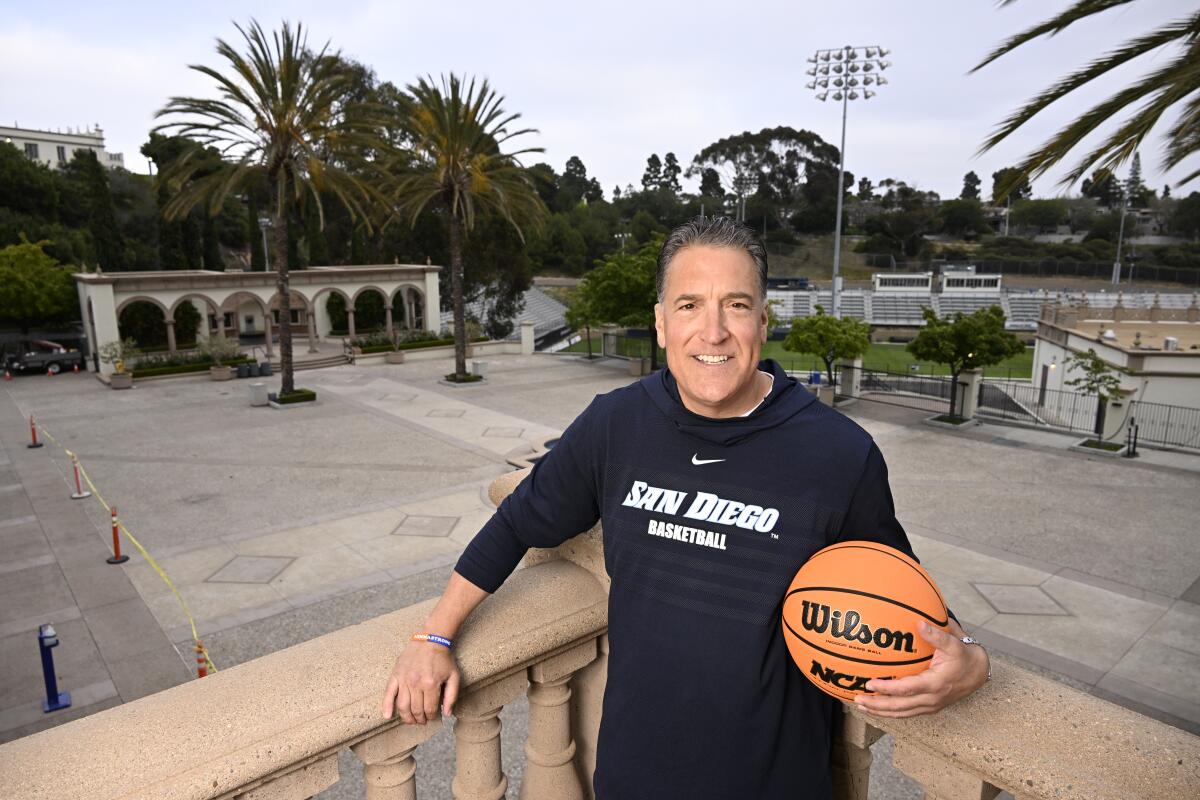
‘Wider-angled lens’ leads to former UCLA, St. John’s basketball boss landing with USD Toreros
In a horseshoe-shaped booth at bustling Manhattan of La Jolla, Steve Lavin used the better part of 3 1/2 hours to explore the people who have influenced his life, being a 32-year-old college basketball coach under the withering spotlight at UCLA, the prostate cancer that reconfigured perspective and the television chapters that kicked open the locker room doors of sideline-walking legends Mike Krzyzewski, Lute Olson, Jay Wright and more.
Then Lavin outlines the seven days — with an estimated 2 1/2 hours of sleep each night — that made him the new coach at the University of San Diego.
The “whys” of a man who coached in the Pac-12 and Big East with lucrative on-air contracts in between joining the West Coast Conference remained in the wings until dessert.
As pasta twirled around a fork grew cold, he talked bathroom supplies.
“On Saturday (Day 7), that was probably the best sleep I’ve had in years,” Lavin, 57, said of finishing an exhausting sprint. “I slept from 6 to like 1 in the morning. Then I couldn’t sleep because I had so much energy. Jasmine (his significant other) and I went to Denny’s, then hit CVS to get supplies like deodorant and toothpaste and reload. We got back to the hotel at like 4:30.
“That week was pure adrenaline.”
What started with a nine-hour interview across from USD Athletic Director Bill McGillis on the Sunday of the Final Four in New Orleans ended with Lavin’s first team workout at Jenny Craig Pavilion.
Then, full-scale collapse.
In between, at least 23 hours of university-wide interviews — yes, Lavin said, even though St. John’s needed just four to hire him in 2010 — led into individual meetings with players, contacts with potential assistant coaches, connecting with more than 50 possible recruits and a news conference.
A bite into the angel hair Bolognese, Lavin framed the scramble.
“We went to the Final Four, packing stuff for four days,” Lavin recalled. “Thankfully I brought a suit, tie and dress shoes (for a corporate function). I didn’t know I was going to need it for a press conference. We had to go to Macy’s to get new underwear and socks.”
What lured Lavin back to a hired-to-be-fired game where most crave the biggest stages and paychecks?
In 2016, Lavin was offered the job at the University of San Francisco, a place near and dear to his Bay Area heart: “I wasn’t going on wild goose chases. My dad has played there. I grew up there as a kid.”
North Carolina State followed. The fit didn’t.
A broadcasting career that included ABC, ESPN, CBS and Fox Sports offered the luxury of being particular and thorough. Lavin was not drawn to just any set of Xs and Os.
Lavin wanted Ooooh.
At this point in his life, after a 7-hour surgery for prostate cancer that pulled him off the court in 2011, the loss of his father, “Cap,” in 2013 and mother, Mary, five years later, he owned both perspective and patience.
Financially, Lavin was in no rush. Mentally, either.
Then the USD job popped open.
“Being the head coach of UCLA at 32, 50 at St. John’s and 57 now, it’s like a parent who is dramatically different with their third child because of life experiences,” Lavin said. “Once my mother passed it was, if a good fit came along, then a return for another tour of duty was intriguing.”
The cosmos offered a nudge.
As Lavin considered USD’s gorgeous campus and climate as a sleeping-giant recruiting tool, as Gonzaga, Loyola Chicago, Murray State and Belmont grew into consistent NCAA party-crashers, as McGillis began saying yes, yes and yes to things he thought could wake the Toreros from their basketball slumber, another sign emerged.
Lavin phoned Craig Nelson, a best friend for nearly 50 years and lawyer who handles high-level contracts. The coach is the godfather of Nelson’s daughter, Emma.
“I sent him the (USD) term sheet to look at and said, ‘It looks like I’m going to be the coach at USD,’ ” Lavin said. “He was like, ‘What?’ He said, ‘Emma just got accepted to USD law school yesterday.’ This is my friend since eighth grade.
“There were things where you just knew and felt it.”
Calhoun, Keady laud Lavin
Bob Myers was just trying to find the crew team. As he wandered the athletic department offices at UCLA, he investigated whether climbing into a boat might be his best shot at becoming a Bruin. His brother rowed at Washington, after all.
Myers, now the president of basketball operations and GM for the NBA’s Golden State Warriors, stumbled across a cubicle and saw a picture of legendary UCLA coach John Wooden.
The image stopped him. Wooden had been an All-America player at Purdue, where Myers’ father, Larry, later attended college. He struck up a conversation with the man sitting in the cubicle.
“I asked how to find the crew team,” Myers said. “He said, ‘I don’t think that’s a sport. It might be a club sport. He said, ‘What about basketball?’ I’m thinking, ‘C’mon, I’m not playing basketball at UCLA.’
“But Lav was the one who convinced me to try to walk on.”
The 6-foot-6 Myers did just that because of a suggestion from a young assistant coach under Jim Harrick named Steve Lavin, who began his career in 1988 under the very same Gene Keady.
A year later, Myers was on scholarship. Two years after that, he was a reserve player for Lavin, the head coach, as the Bruins rumbled to the Elite Eight of the NCAA Tournament.
“Lav is a big part of my story,” Myers said. “I remember he pulled in Charles O’Bannon, Cameron Dollar and I over and said to guys who were 10 years younger, ‘I’m going to need you guys to get through this season.’
“I appreciated the vulnerability. He didn’t act like he had it all figured out. He didn’t ask for the job. It was thrust on him (after Harrick was fired for lying about a recruiting dinner expense report). That’s not an easy job to step into. He had to do it on the fly, at 32, with no time to prepare in the summer.
“Until you’ve done something like that, you can’t appreciate the pressure. Especially at UCLA.”
In Lavin’s first six seasons, he averaged 22.5 wins while guiding four Sweet 16 trips after the Elite Eight run in his debut season. When he went 10-19 in his seventh and final season, the ax fell quickly.
Not exactly a shock, he said.
Former coaches Gene Bartow, Gary Cunningham and Larry Brown survived for just two seasons, while Larry Farmer (3) and Walt Hazzard (4) lasted only a bit longer. The Bruins were not known for letting the soup simmer.
“I knew the racing form,” Lavin said. “So I knew when I got the position, this was not going to be my last job. I had enough self-awareness and enough of a sense of college basketball and UCLA in particular to know that my days were numbered.
“I was more just grateful. I think that was a healthier outlook.”
Seven years of broadcasting followed, a Big East courtship blossomed and a marriage with St. John’s was sealed.
Some critics questioned whether the end at UCLA or extended time away from the sidelines raised red flags when Lavin landed the job in 2010. Questions lingered about whether he truly was a solid game-plan guy.
In his first season, Lavin snapped St. John’s nearly decade-long NCAA Tournament drought — despite fighting cancer that sidelined him later that fall. Viewing the game through a real-life lens offered a broader paint brush, gallows humor and all.
“For a few games I sat in a suite, to be present and visible, so they didn’t think I was in a dungeon in an iron lung or something, like a Vincent Price thing,” Lavin said. “That experience, not being able to coach my team, makes you think.”
In Lavin’s fifth and final season, another NCAA bid ended with his firing.
“St. John’s was more of a surprise (than UCLA),” Lavin said. “We went to the tournament my last year. We had back-to-back 20-win seasons. But the university hired a new president who came in and thinks, hey, we can get (former university All-American and NBA star) Chris Mullin. If Lav can get us to two NCAAs, two NITs and win 20 games a year, imagine what Chris Mullin could do.”
Mullin was hired, finishing his four-season run with a 59-73 record.
In Lavin’s early St. John’s seasons, he faced off against former UConn coach Jim Calhoun. The architect of three national titles understands why a coach who had been on the national stage would return to a smaller work in progress.
Calhoun returned to coach Division III program Saint Joseph’s in West Hartford, Conn., for three seasons before retiring last year.
“It’s hard to stay away,” Calhoun said. “You hear the complaints about NIL (name, image, likeness), about the transfer portal, and that’s all true. But it’s the game that gets you. It’s the kids. You miss it. When you walk into a gym, it’s a special thing.
“It’s exciting to build a team or program that’s been down.”
Lavin, Calhoun said, is a ferocious competitor no matter how collected the TV veteran can appear.
“He’s like a kamikaze kid. He really is,” Calhoun said. “He’s suave and cool off the court, but not on the court.”
Keady, who returned to coaching to be an assistant at St. John’s, had a courtside seat to soak up Lavin’s growth and maturity in the sport.
“They (USD) are lucky to get him,” Keady said. “He’s a good teacher. He was so intelligent about coaching and how he went about it. He has energy. You can tell when somebody likes what they’re doing.”
More TV was coming, but Lavin was not yet done with the sidelines.
Lavin explains the ‘why’
When Lavin reached out to McGillis, USD’s athletic director, the résumé and experiences impressed in spite of another seven years away. The combination intrigued former Toreros star Bernie Bickerstaff, who coached the NBA’s Supersonics, Nuggets, Bullets, Bobcats and, on an interim basis, the Lakers.
As a member of the USD’s search committee, Bickerstaff applauded McGillis’ decision.
“Steve’s been successful in major conferences. He’s put time in at the NCAA Tournament,” he said. “So his credibility when it comes to coaching basketball is very good. He’s had the opportunity to stay around the game. When you’re in broadcasting, you have to do your homework on teams and players.
“Steve’s a gregarious person who communicates very well. The conversations, they don’t seem scripted. It seems real. That’s important.”
After the deodorant and toothpaste runs, Lavin dove into recruiting. A fit of sleeplessness arrived at 4 a.m. one day, leading to an hour-and-a-half texting session with an overseas player who possesses a game resembling “kind of a poor man’s Steve Nash.”
Though Lavin was uncertain if the player had scholarship potential, he kept the conversation going as part of turning over rock after rock.
Again, though: Why?
Why return when the bank account’s flush? Why re-enter the college chaos without using name and status to chase a gig with an established blue blood? Why jump into the modern game, where transfer-happy players extend palms for NIL riches?
“A lot of coaches come back because of egos or because they have something to prove, or the dough,” Lavin said. “To me at 57, you can see everything through that wider-angled lens.”
Lavin flashed a photo of his current locker, with “Lavin” written in simple pen on a piece of ripped, blue athletic tape.
The smile, shelved for too long, reached to the horizon.
“I love it,” he said. “It’s so blue collar and spartan. This is no frills. This is ‘Torero Tough.’ This is not wine and cheese, you know, contrary to what people might think.”
The pasta long gone, the conversation shifted to the adjacent hotel lobby. A man checking to see if the restaurant had closed. Then he stared at Lavin, scrambling through the memory banks to sort out how he knows him as he points a finger his way.
“You’re the TV guy, right? San Diego State?” he said.
Lavin corrected him, indicating that it was USD, the “private, Catholic university.” The coach introduced himself and the columnist in tow, breaking out his cellphone to offer his number to a stranger.
“We’re going to get you to a game,” Lavin vowed. “We’ll remember this night. It’ll be a kick.”
The man made an off-hand comment about coaches constantly sniffing around for the next job. Lavin, in fact, has done the opposite, more than once.
“I wasn’t chasing it,” Lavin said. “I wasn’t going to be Brando, ‘On the Waterfront,’ ‘I coulda been a contender.’ ”
When the conversation closed, the man blurted, “Good luck with the Aztecs.” Lavin, wearing a wry grin, glanced to the columnist.
“We’ll have to work on that,” he said.
And Lavin, a coach happily and again, plans to do just that.
Sign up for U-T Sports daily newsletter
The latest Padres, Chargers and Aztecs headlines along with the other top San Diego sports stories every morning.
You may occasionally receive promotional content from the San Diego Union-Tribune.
